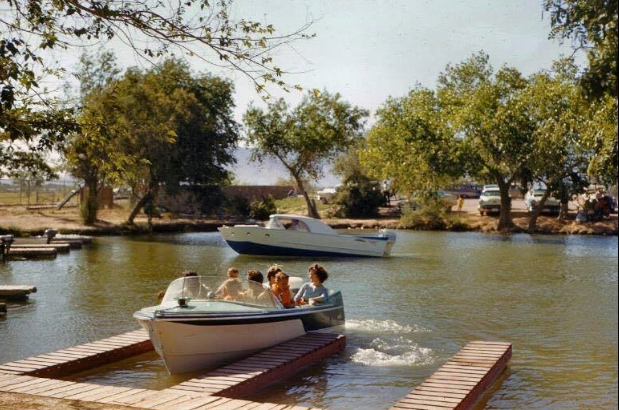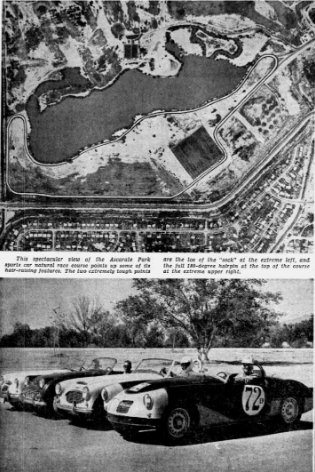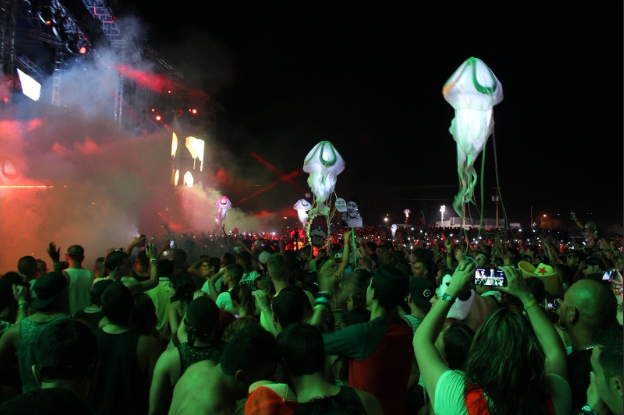By Luis A. Menendez
On August 24, 1937, the El Paso Times ran a headline reading "El Paso Votes Park Tax Overwhelmingly”.1 The park tax referred to the proposed tax levy of three cents, which eventually accumulated to $100,000, which bolstered to a $400,000 federal grant for the construction of a new recreational center and park. By casting 372 ballots over the necessary two-thirds majority for the proposed tax, El Paso showed overwhelming support for the construction of what would later become Ascarate Park.
The area where the park resides today was created as part of an effort by the International Boundary Commission to straighten the Rio Grande in 1930. Once approved and voted for, the park took three years to complete. More than 200 Civilian Conservation Corps workers were involved in removing more than one million cubic yards of sand to create the lake and build the tennis courts and baseball fields.2
Today, Ascarate Park is the largest public park in all of El Paso County, measuring 400 acres. The park has become an integral part of life in South Central El Paso that offers many recreational activities, including sports, picnicking areas, fishing, a golf course, a fully equipped aquatic center, and a Healing Garden.
A little-known fact about Ascarate Park is that it used to have its own racetrack, which hosted a variety of races. An article in the El Paso Times titled "National Championship Sports Car Race Plans Set" from 1959 informed its readers that the Sports Car Club of America was hosting its second to last national championship race at the Ascarate Park racetrack.3 The course was two miles long, and one of the toughest in the country. This race, as well as many others before and after it, were sponsored by the El Paso 20-30 Club, a local car enthusiast club.4
In recent history, Ascarate Park became an important destination for the El Paso youth because of its annual hosting of the Sun City Music Festival, which ran from 2011-2017. The festival would consistently bring some of the biggest names in electronic music from around the world, such as David Guetta, Tiesto, Steve Aoki, and Martin Garrix. During its first year, an attendance of around 20,000 fans was recorded, cementing the festival as a household name for El Paso fans for years to come.5
First Image: Ascarate Lake, circa 1960s
Second Image: The racetrack layout. Below it, a picture of the El Paso 20-30 Club testing the track
Third Image: Sun City Music Festival, 2014
Footnotes:
1El Paso Times (1921-2009), Aug. 24, 1937. https://utep.idm.oclc.org/login?url=https://www-proquest-com.utep.idm.oclc.org/historical-newspapers/august-24-1937-page-1-12/docview/2666655833/se-2.
2 Martinez, Aaron. “Historic Marker Placed at El Paso’s Ascarate Park.” El Paso Times, May 23, 2015. https://www.elpasotimes.com/story/news/local/2015/05/23/historic-marker-placed-at-el-pasos-ascarate-park/31240385/.
3 El Paso Times (1921-2009), Oct 18, 1959. https://utep.idm.oclc.org/login?url=https://www-proquest-com.utep.idm.oclc.org/historical-newspapers/october-18-1959-page-63-117/docview/2667449861/se-2.
4 El Paso Times (1921-2009), Oct 18, 1959.
5 Torres, Mariel. “The Rave Is All about Music, but Some Seek Ecstasy to Enhance the Dance.” Borderzine, October 5, 2011. https://borderzine.com/2011/10/the-rave-is-all-about-music-but-some-seek-ectasys-to-enhace-the-dance/.






コメント